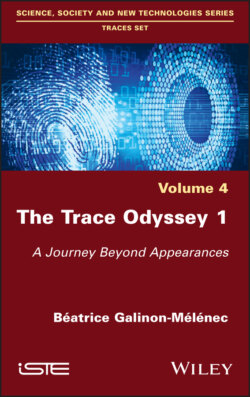Читать книгу The Trace Odyssey 1 - Beatrice Galinon-Melenec - Страница 14
I.8. Need for agreement on terminology
ОглавлениеIn this book, we seek to test the acceptance of the terms “imprint”, “mark”, and “indice” as subsets of the “trace” class. This brings us closer to the statements of the Dictionnaire historique de la langue française (Rey and Hordé 2006)25. The propositions, whose usefulness26 we examine with regard to the situations analyzed, are:
– the imprint27 is the conséquence-trace that we look at from the angle of a shape or material with a certain durability. The imprint is a category of traces (consequence of an event) whose form and/or material have a certain duration28;
– the mark29 is the conséquence-trace that we observe from the angle of the signifying differentiation. The mark is a category of conséquences-traces that constitutes a recognizable sign, distinctively and meaningfully30 identified;
– the indice31 is the conséquence-trace that we observe in order to identify what happened in the past. The indice is a trace category (consequence of an event)32 to which a cognitive interpreter associates an indexed causal inference with a scenario33.
In all the above cases, it is the anthropologically centered trace, that is to say a part of reality where humans recognize the process that engendered them in the more or less recent past, or that engenders them still (through actions in the present that have conséquences-traces later on, e.g. “managing one’s own digital traces).
In all these cases, the interpreter is a human being, i.e. an Homme-trace, endowed with a corps-trace that opens the person up (and closes the individual off) to the space of the senses.
